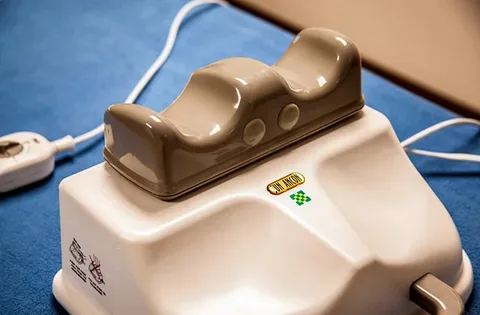Magnetic Resonance Imaging (MRI) is one of the most sophisticated diagnostic tools in modern medicine. It provides detailed images of internal organs, tissues, and structures without the use of ionizing radiation, making it a safe and effective method for diagnosing a variety of medical conditions. This article explores the MRI procedure in depth, along with its associated risks and benefits.
What is an MRI Scan?
MRI (Magnetic Resonance Imaging) is a non-invasive imaging technique that uses strong magnetic fields and radio waves to create detailed images of the organs and tissues in the body. Unlike X-rays or CT scans, which use ionizing radiation, MRI relies on magnetic energy, making it especially useful for scanning soft tissues.
MRI is widely used to evaluate the brain, spinal cord, joints, abdomen, pelvis, and blood vessels. It’s often the go-to imaging method for neurological and musculoskeletal conditions, and it plays a key role in detecting tumors, strokes, injuries, and degenerative diseases.
How Does MRI Work?
MRI works on the principle of nuclear magnetic resonance. Here’s a simplified explanation of how it works:
- Magnetic Field: The patient is placed in a large, tube-shaped MRI machine that contains powerful magnets. These magnets align the hydrogen atoms in the body, which are abundant in water and fat.
- Radio Waves: Short bursts of radio waves are sent into the body. These waves knock the aligned hydrogen atoms out of position.
- Signal Detection: When the radio waves are turned off, the hydrogen atoms return to their original alignment. As they do, they emit energy signals.
- Image Creation: These energy signals are detected by the MRI machine and converted by a computer into detailed images of the body’s internal structures.
Different tissues emit different signals, which allows MRI to distinguish between soft tissues like muscles, ligaments, cartilage, and the brain.
MRI Procedure: What to Expect
Preparation
- Clothing and Metal: Patients are usually asked to change into a hospital gown and remove all metal objects, including jewelry, belts, and hairpins.
- Medical History: It’s essential to inform the technician of any metal implants, pacemakers, or previous surgeries.
- Fasting: For some scans, especially those requiring contrast dye, patients may be asked to fast for a few hours.
During the Scan
- Positioning: The patient lies on a movable table that slides into the MRI scanner.
- Stillness: Remaining still is critical to avoid blurry images. Straps or cushions may be used to help with this.
- Noise: MRI machines produce loud thumping or knocking noises. Patients are given earplugs or headphones, sometimes with music.
- Contrast Dye: In some cases, a contrast agent (usually gadolinium-based) is injected into a vein to enhance the image quality.
- Duration: Scans can take 15 to 90 minutes, depending on the area being imaged.
After the Scan
- There’s usually no downtime unless a sedative or contrast dye was used.
- Patients can resume normal activities immediately.
- If contrast was used, drinking plenty of water helps flush it from the body.
Benefits of MRI Scans
- Detailed Imaging of Soft Tissues
MRI offers unparalleled clarity when imaging soft tissues, such as the brain, spinal cord, joints, and organs. It is superior to CT scans and X-rays in this regard.
- No Radiation Exposure
MRI does not use ionizing radiation, making it safer for repeated imaging and for use in children and pregnant women (in certain cases).
- Early and Accurate Diagnosis
MRI can detect abnormalities at an early stage, even before symptoms become severe. This allows for timely intervention and improved treatment outcomes.
- Wide Range of Applications
MRI is used across multiple specialties:
- Neurology: Detects strokes, brain tumors, multiple sclerosis.
- Orthopedics: Evaluates torn ligaments, spinal injuries, and joint disorders.
- Cardiology: Assesses heart structure, congenital heart disease, and blood vessels.
- Oncology: Identifies tumors, monitors cancer progression, and guides biopsies.
- Non-Invasive and Painless
MRI is a non-invasive technique that typically causes no pain or discomfort during the scan.
Risks and Limitations of MRI
Although MRI is generally safe, there are certain risks and limitations that patients and healthcare providers should be aware of.
- Metal Implants and Devices
Patients with certain implants cannot undergo MRI. These include:
- Pacemakers or defibrillators
- Cochlear implants
- Metal clips or stents
- Implanted drug pumps
The strong magnetic field can interfere with these devices or cause them to move, posing serious risks.
- Allergic Reaction to Contrast Dye
While gadolinium-based contrast agents are generally safe, some individuals may experience:
- Mild allergic reactions (rash, nausea)
- Rarely, severe reactions like anaphylaxis
- Patients with kidney problems may develop a rare condition called nephrogenic systemic fibrosis (NSF)
- Claustrophobia and Anxiety
Many patients feel uncomfortable or anxious inside the enclosed MRI scanner. For some, this can trigger claustrophobia. Open MRI machines are an alternative but may not be suitable for all types of scans.
- Loud Noise
MRI scanners are noisy. While this is harmless, it can be startling or uncomfortable without ear protection.
- Length and Cost
MRI scans are typically more time-consuming and expensive compared to other imaging methods like X-rays or ultrasounds. This can be a limiting factor in resource-constrained settings.
Who Should Not Have an MRI?
MRI may not be recommended for:
- Individuals with metal implants that are not MRI-compatible
- Pregnant women in their first trimester (unless absolutely necessary)
- People with severe kidney disease (if contrast dye is required)
- Patients with severe claustrophobia (unless sedated)
Tips for a Safe and Comfortable MRI Experience
- Always disclose your full medical history to the technician or radiologist.
- Inform them about any allergies or implanted devices.
- If you’re anxious or claustrophobic, ask about sedation or open MRI options.
- Follow fasting instructions carefully if contrast dye is used.
- Wear comfortable clothing without metal fasteners if gowns are not provided.
Conclusion
MRI scans are a cornerstone of modern medical diagnostics, offering safe, detailed, and highly accurate imaging of soft tissues and internal structures. While generally risk-free for most individuals, they do come with certain limitations and precautions, especially for patients with implants or kidney issues. Understanding the MRI procedure, its potential risks, and its numerous benefits can help patients feel more informed and comfortable with this powerful diagnostic tool. As technology advances and accessibility improves, MRI will continue to play a critical role in early detection, diagnosis, and treatment of countless health conditions.
Now find best MRI scan centre in Delhi NCR via Healthi India












































